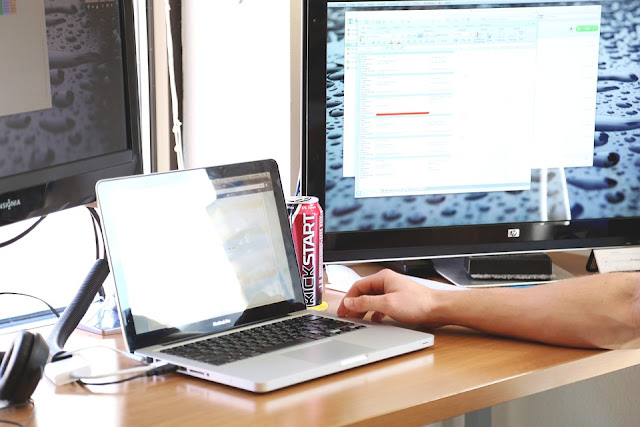HP Notebook PCs - Use and Test AC Adapter


This document is for HP and Compaq notebook computers.
The AC adapter is used to charge the battery in the notebook computer of the notebook and to provide an approved power supply for operating the notebook for extended periods of time. If the AC adapter fails, it will not charge the battery and will not provide power to turn on the notebook. Use this document for information about how to use and test your computer's AC adapter.
Use the AC adapter
With proper use and care, the AC adapter will charge the notebook battery and save power to run the notebook for extended periods of time. Read the section below for information on the proper use and care of the AC power adapter.
Connect the AC adapter
Tips on using an AC adapter
Understanding HP Smart Adapter Messages
Determination of AC power supply
Understand the significance of AC adapter lights
Use the connection base
Test the AC adapter
If any of the following symptoms appear on your notebook, test your AC adapter by following the steps below to verify that the AC adapter is working correctly.
When the notebook is connected to the AC adapter, the notebook will not turn on and will not turn on the lights or LEDs.
When the laptop is connected to the AC adapter, the monitor does not turn on.
When the laptop is connected to the AC adapter, the battery does not charge.
Alarm: The AC adapter may stop operating and may be left without output due to conditions that may cause high voltage, temperature and short circuits. To recover the output of the adapter, disconnect the adapter from the notebook for 5 minutes and reconnect it.
Step 1: Check the adapter, power cord and computer to detect any physical damage
Follow these steps to check the power components to detect any corruption:
Disconnect the power cord from the AC outlet on the wall.
Disconnect the DC connector from the computer.
Check the AC adapter label to make sure it is marked with the HP logo.
Figure: Example of an HP logo on an AC adapter
AC adapter with HP logo markup
Check the AC adapter and the wire to detect any actual damage or heat-increasing signs.
Figure: Example of AC adapter damage
AC adapter broken and cracked and damaged wire
Figure: Example of AC adapter damage
A damaged AC adapter
Figure: Examples of broken connectors
Examples of broken connectors
Shape: Examples of pinned or missing ID pins
Examples of pins are identified as dotted or missing
Check the DC power connector on the computer to check that it is not flattening or breaking.
Make sure that there are no obstructions or any strange material inside the DC connector and that the central ID pin is straight and not slanted inside the DC connector.
Shape: The DC connector end of the computer
Plug the DC power cord into the computer
Check the head of the AC adapter socket to detect any damage.
Shape: AC power adapter head
Head of the damaged AC power adapter
Check the DC connector visually to detect any damage.
Shape: DC connector
DC connector
Examine the ID pin visually inside the AC adapter to determine if it is flexed.
Pin is not damaged
Pin is damaged and flexed
If there is damage to the AC adapter, DC connector, or any wires, do not use the adapter. You can buy an alternative to an HP AC adapter. See Requesting supported HP replacement parts for more information, or contact HP Customer Support for assistance.
If there is no actual damage to the AC adapter, the DC connector, or the wires, proceed to the next step.
Step 2: Check that the wall outlet is working correctly
Follow these steps to verify that the power outlet is working on the wall:
Disconnect the AC power cord from the wall outlet.
Test the outlet on the wall by plugging in a small lamp or any other device that works well.
If the micro-lamp or other device is working properly, the wall outlet on the wall is working properly. Go to step 3: Disconnect the power cord from the AC adapter and reconnect it.
If the wall outlet does not provide the necessary power, test the lamp or other device in other sockets until you find a good wall outlet and then proceed to the next step.
Step 3: Disconnect the power cord from the AC adapter and reconnect it
Follow these steps to connect the power cord.
Remove the power cord from the AC adapter.
Reconnect the power cord to the AC adapter. Make sure that the power cord is inserted and firmly seated in the AC adapter's inlet.
Step 4: Connect the AC adapter to the computer
Follow the following steps:
Disconnect the main (and secondary) battery from the laptop.
Plug the DC power connector of the AC adapter into the power connector of the computer.
Connect the power cord of the AC adapter directly to the wall outlet. Do not install the adapter into an electrical strip with multiple sockets, nor with a source protected by a device to protect against high current or secondary power source.
Check that the indicator light on the AC adapter is on when you connect to the AC outlet on the wall.
NOTE: Some AC adapters do not contain light.
Check that all power cord connections are secure.










No comments:
Post a Comment